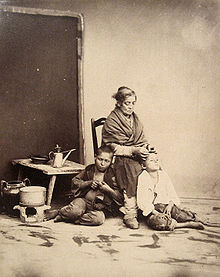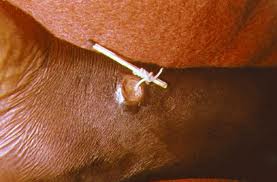This has been a parasite that I have found interesting since the first time I ever heard of it. I am drawn to this parasite because of its ability to modify the behavior of its host. There is good documentation that this phenomenon occurs in rats, but little is known about how it effects humans. Some report an increase in thrill-seeking behaviors such as randomly taking up sky-diving or B.A.S.E. jumping post-infection. But I have yet to read any scientific papers that can back up these claims. However, the thought is still pretty interesting!
Taxonomy

This parasite is in the phylum apicomplexa, which is in the kingdom chromalveolata. Like other apicomplexans (
Plasmodium, Leishmania, Eimeria, etc.),
Toxoplasma gondii is parasitic. It is a type of coccidian parasite, belonging to class conoidasida, subclass coccidiasina, and order eucoccidiorida. (Another famous coccidian you may have heard of is
Eimeria tenella, the bane of the commercial poultry industry.)
T. gondii belongs to the family Sarcocystidae. This parasite was first described in 1908 by Charles Nicolle and Louis Manceaux from a gundi (
Ctenodactylus gundi) and by Alfonso Splendore from rabbits that same year.
Life Cycle
The life cycle of this parasite typically involves two hosts: a cat and a mouse/rat. However, the parasite has been known to opportunistically infect birds and mammals other than cats and mice. It has even been found to infect humans. For the sake of simplicity, I'll describe the life cycle using the cat/mouse model, then discuss human infections.

To begin, an uninfected feline must ingest an infected mouse. In the infected mouse (the intermediate host), the parasite has formed cysts in the brain, the liver, and the muscles. After ingestion of these cysts, the cyst breaks open to release bradyzoites (non-motile, slow-growing forms) in the stomach. These bradyzoites differentiate to form both asexual tachyzoites (motile, fast-growing forms) and sexual gametocytes (gamete-forming cells). The gametocytes will fuse to form zygotes, which mature into oocysts that will be passed out of the cat with the feces. Instead of eating a cyst, the cat could also ingest oocysts themselves. In this case, the oocysts would release sporozoites that become tachyzoites.
If the cysts or oocysts are eaten by the intermediate host, in our case the mouse, then bradyzoites and tachyzoites are released in the stomach. Bradyzoites will become tachyzoites in hosts other than cats. The tachyzoites invade cells and multiply via endodyogeny before lysing the cells to release more tachyzoites. During endodyogeny, two daughter cells are created within the mother cell during division. The mother cell is later consumed by the daughter cells just before the daughter cells separate. The tachyzoites are often kept at bay or even destroyed by the host's immune response, but some do manage to undergo transformation into the bradyzoite form. Whenever tachyzoites transform back into bradyzoites, they form cysts in the body tissues of the intermediate host. Because the parasites are within host tissue cells, the host's immune response doesn't kick in to destroy the parasites.

One of the more interesting aspects of the life cycle is the change in the behavior of the intermediate hosts. Mice and rats have been known to be more bold...by this I mean that they are more likely to run out in front of cats rather than avoiding them. Lab studies have shown that infected mice have less of an aversion to cat urine than do healthy mice. This behavior makes them more likely to be eaten by cats, thus perpetuating the life cycle of the parasite. I do not know whether this parasite somehow suppresses the inhibitions of the mice or if it simply destroys part of the olfactory tissue, but I'd certainly like to know more about the mechanism by which it modifies its host's behaviors. Humans infected have been said to become more pulled to engage in thrill-seeking behaviors, but I haven't read any scientific studies that support this claim.
In order for human infection to occur, one must ingest undercooked meat (from say a bird, sheep, or pig) that is tainted with cysts. Another route of infection is the consumption of food or water contaminated by feces from infected cats. People can also pick up
T. gondii via contact with contaminated environments such as fecal-contaminated soils or changing the litter box for an infected cat. Yet another way that people can become infected is via organ transplantation or blood transfusion from infected individuals. Finally, toxoplasmosis can be passed through the placenta from mother to fetus. This is the reason why pregnant women are not supposed to clean out litter boxes.
Toxoplasmosis
This disease infects approximately 22% of the US population. In non-pregnant individuals it is asymptomatic and often cures itself unless a person becomes immunocompromised. Sometimes it may present with mild flu-like symptoms that persist for several weeks, but eventually goes away.
In infected women who become pregnant, the fetus is often protected as the mother has already developed immunities to the parasite. However, if a pregnant woman becomes newly infected, the disease can be congenital (passed to the fetus) through the placental tissue. The severity of the disease varies with the stage of pregnancy, but can result in miscarriage, still birth, or the infant can be born with signs of toxoplasmosis. (Generally, the infant emerges with an abnormally large or abnormally small head.) Sometimes, the infant can be infected at birth and not show signs until later in life. In these cases, infants may develop a loss of vision, a mental disability, or seizures. The loss of vision may be due to a
Toxoplasma-induced eye disease in which the retina become irreversibly damaged.
In immunocompromised people, the disease may experience fevers, headaches, nausea, a decrease in coordination, seizures, and/or confusion. People with HIV are very much at risk for toxoplasmosis.
This disease is often treated with pyrimethamine and/or sulfadiazine when treatment is needed. AIDS patients with toxoplasmosis may need to continue treatment for the rest of their lives, or for as long as they are immunosuppressed. It is difficult to eradicate, especially in pregnant women and infants due to the nature of the parasites. Many parasites can be killed, but if even a few remain, they are prolific enough to cause a resurgence in their population within the host to the point of pre-treatment levels of infection.
Moral of the Story
The best way to prevent yourself from getting toxoplasmosis is to reduce the risks from food and environmental contamination. Always cook your meat thoroughly and allow adequate resting time prior to carving. (You can also freeze the meat prior to cooking to further reduce the risk of infection.) Always wash and/or peel fruits and vegetables before consumption. Don't drink water from questionable sources. Be sure to wash cutting boards and utensils thoroughly. Wear gloves while gardening and keep sandboxes for children covered when not in use. Feed your kitty food that you know isn't contaminated and keep them indoors to reduce their chances of picking up toxoplasmosis. And finally, if you are pregnant or immunocompromised, have someone else change out the litter box and avoid handling stray or unfamiliar cats.

























